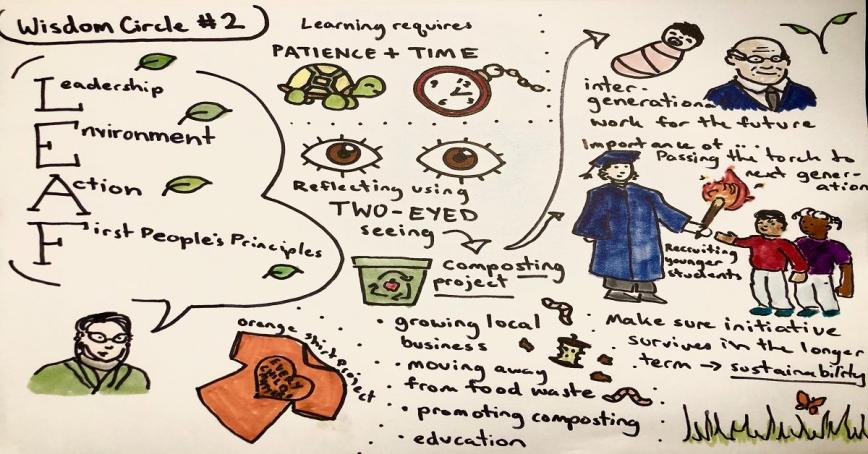How BC kids are connecting with Puerto Rican peers on climate action
Topics
Featured
Share online

When it comes to climate action, the kids are all in.
At least, that’s the case with the young people across BC and far away in Puerto Rico who are participating in the ResiliencebyDesign (RbD) Lab’s Designing Climate Resilience: A Youth Participatory Action Research Project.
Funded by an Insight Development Grant from Canada’s Social Sciences and Humanities Research Council, the project is led by the lab’s director, Robin Cox, who is also program head of the Royal Roads University Master of Arts in Climate Action Leadership program.
“The project was really envisioned as a way to engage with young people and educators to explore how to amplify their impact, increase their awareness and understanding of climate change, and contribute to their communities’ resilience in the context of climate change,” Cox says.
Everyone has the capacity to engage in leadership for climate action toward a more resilient, more equitable and a more livable world,” she adds. “And key amongst those people who can be contributing to that leadership — and already are — are young people. - Robin Cox
Within the project, the leadership and focus of participating youth vary by location, says Austin Lang, a research assistant with the project who previously completed a Master of Arts in Environmental Education and Communication at RRU. Student initiatives include:
- Lord Byng Secondary School in Vancouver, where students created a kit of items that could be used by kids in younger grades to learn about climate action;
- At Revelstoke Secondary School, students are developing a composting pilot program for the school and the rest of the district;
- At Q’aLaTKu7em Community School north of Pemberton, a two-room schoolhouse up a logging road that serves a small Indigenous population, students focused on involving the community in removing cars that were no longer being used to create space for other purposes;
- At St. Margaret’s School in Victoria, students are focusing on ocean acidification and the health of coral;
- And in Puerto Rico, a variety of teams of young people and educators are planning to lead a number of initiatives that include holding a climate action symposium for their community; creating sustainable gardens for their school that can also help community members; and working with primary students on climate education.
In Puerto Rico in particular, Lang says, there is a strong current of climate activism among youth because they live on the front lines of climate change—their island nation having been battered by ever more powerful hurricanes.
“That is a key part of what they bring into this project: that activism and the feeling that what they are experiencing and what they are doing goes beyond this project,” he says.
One aspect of the project that the BC youth involved are looking forward to is a connection between them and their peers 6,000 km away in Puerto Rico, notes Irene Corman, a former school district associate superintendent and a consultant on the project.
“The young people who are already invested in climate action recognize that work needs to happen at the local level but also recognize that this is a global problem,” she says. “They want to connect with young people in other countries and other locations who are engaged in climate action and demonstrating that ‘We have to do something and we have to do something collectively.’”
Such collective action requires change and even curriculum creation from the ground up. By grounding project designs in First Peoples Principles of Learning, which identify common elements in the varied teaching and learning approaches that prevails within Indigenous societies, students have the opportunity to work with this new and critical aspect of the BC curriculum. A professional network is being established through the connections among the educators involved, that is planned to extend beyond the monthly Grounding Sessions and Wisdom Circles.
“That’s what we hope to see happening at the participating schools, where the teachers working with students can develop ways of integrating climate action and First Peoples Principles of Learning into their teaching that can be shared with educators in their districts, in their regions and across the province,” Corman explains.
As for the young people, Lang says, “There’s a different aspect for youth creating a climate action project. Because they’re not in this for making money, they’re not in it to become famous. Their specific goal and the excitement that youth are showing is always around how much of an impact they can make, especially when they’re thinking about their communities.”
Cox adds: “A lot of the overarching focus of the ResiliencebyDesign Lab is about contributing to young people’s sense of empowerment and agency and supporting their belief in their capacity for leadership. We want youth to recognize that they can make a difference when it comes to climate change and disasters. And they can do that within their communities.”
“Generally, with this kind of research/capacity building approach, some of the impacts of the research are not as immediate as they might be in other kinds of research projects,” she notes. “Some of what we invest in is a recognition that empowerment happens over time… that we’re planting seeds that we don’t always get to see develop but we trust will develop.”
We always want to hear stories about the people, programs and places that are the Royal Roads experience. Share yours via the RRU Story Exchange and it could be featured on our website and social media.